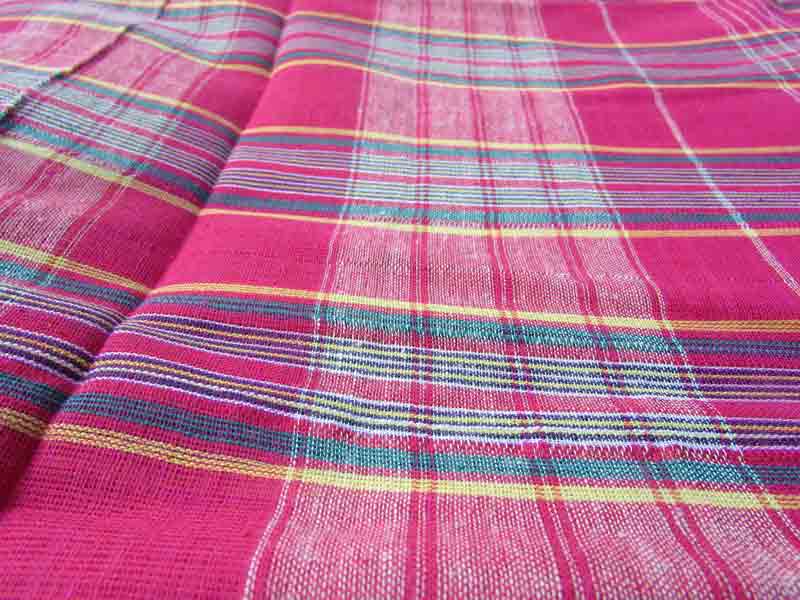
In the olden days, craft was always an oral tradition passed on from father to son, mother to daughter. Some of the methods were lost, and the priceless heritage textiles disappeared into the annals of time. To perpetuate the craft, documentation is enforced today, and craft activists encourage vanished textiles to be revived. In this way they are brought to the forefront to a public which does not know of its existence, the tradition is revived, old skills relearnt and at the same time tweaked to suit the demands of the contemporary market.
To celebrate Handloom Day, Crafts Council of India invited two young textile revivalists to showcase their resuscitated sarees. I anchored the show, talked about my initiative in revival, and we had a lively panel discussion.
Rohit Phalgaonkar, who holds a PhD for his work on the Art History of Goa and a teacher by profession, went on to collect samples of the tribal sarees which died out some 40 years ago. He reproduced original samples, which he collected over a decade, of Goa’s Gauda community and thus a saree lost and disappeared was revived thanks to his efforts. Phalgaonkar replicated the sarees exactly as they were woven before, in bright colours and checks, with the typical border and the coarseness of the saree adding to its raw beauty. He took help from the handloom weavers from Karnataka and Tamil Nadu to create exact prototypes of the original ones.
For 200 years, the Portuguese imposed a ban on saree weaving to introduce imported textiles but a large number of people stuck to their native identity.
For 200 years, the Portuguese imposed a ban on saree weaving to introduce imported textiles and the dress culture, yet a large number of people stuck to their native identity. Anton Juan wove sarees secretly in a basement in his home risking severe punishment. Art silk was introduced during the Portuguese rule in Goa. These sarees called ‘Saado’ were gifted to brides and other family members during weddings. Phalgaonkar revived these sarees ensuring they were handwoven with art silk, and were named after two goddesses. Shantadurga is the red sari while Navadurga is pink. Thus was born the Gauda saree of the Adivasis of Goa. During the Portuguese period some Gaudas got converted to Christianity and the rest stayed on as Hindus. The Christian Gaudas did not give up their original Hindu cultural practices including the saree.
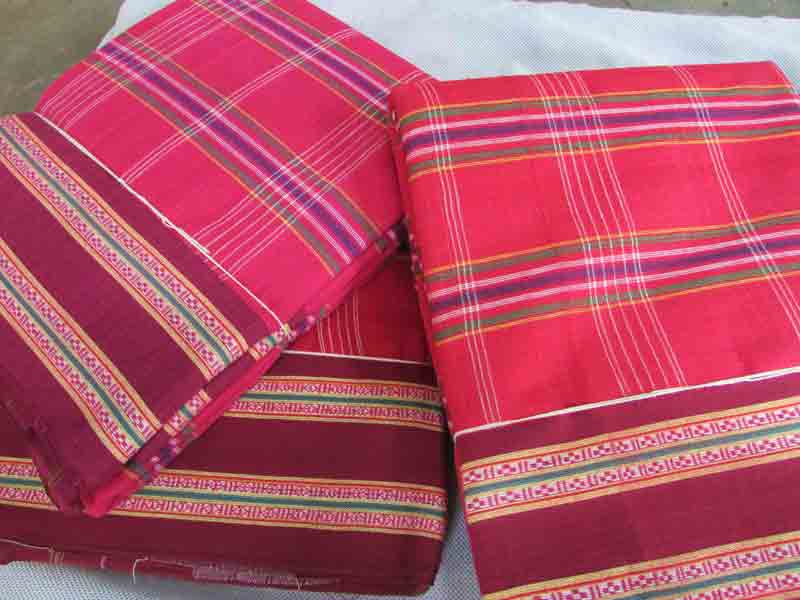
Phalgaonkar revived four original designs of Goa’s Gauda sarees naming each kind after the village and the village deity from where the original saree was found. The Gauda saree also has a specific border. Some models have Rudraksh designs on it. It shows their connect with their pre-Portuguese culture. The Hindu counterparts slowly shifted from the original design to the traditional nine-yard saree which came from the neighbouring State of Maharashtra, retaining tribal style of draping which included tying of the knot on their shoulder. Hence the saree needs to be called as Christian Gauda saree or the Adivasi saree of Goa.
Hemalatha Jain researched and revived the exquisite Patteda Anchu sarees as she stumbled upon this 10th century forgotten relic in North Karnataka.
Hemalatha Jain researched and revived the exquisite Patteda Anchu sarees as she stumbled upon this forgotten relic of the 10th century in North Karnataka. This young woman, passionate over revivals, wears many hats… that of educator, curator, designer and revivalist. She established Punarjeevana, a nonprofit organisation in Pune, and a self-help group.
She first laid eyes on the patteda anchu saree when she visited the Yellamma Saundatti temple in Karnataka. Fascinated by a remnant of an old saree owned by a Devadasi, Hemalatha plunged into research and documentation and ultimately a revival, basing her PhD thesis on this weave. She gave the original saree a contemporary twist, and brought it to the forefront of saree fashion.
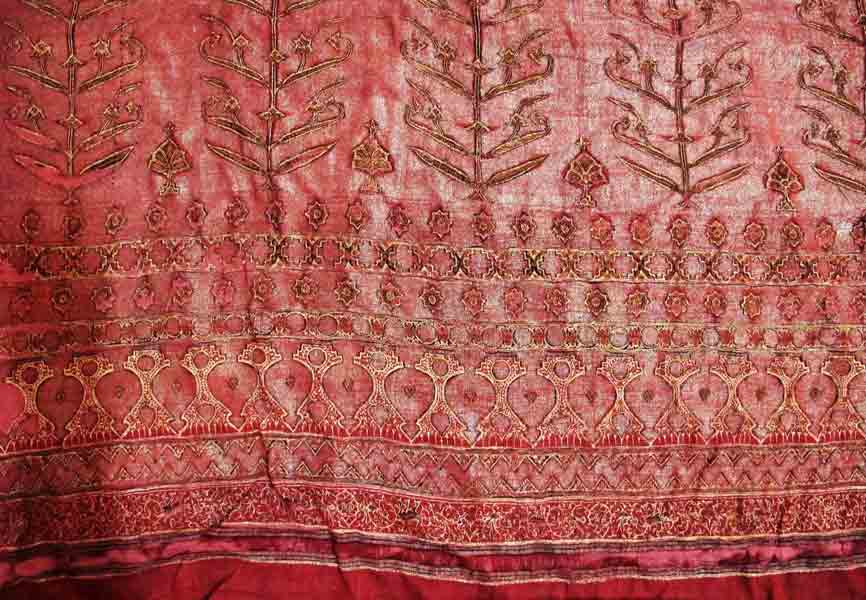
She worked with weavers in North Karnataka, and got to know that it was woven centuries ago in and around the villages of Gajendragarh, Belgaum, Raichur, Kodal, Bedar, Bellary, Gulbarga and Dharwad. “It was considered an auspicious garment, offered to the temple goddess when the daughter of a household got married,” she says. As is the case with most revival sarees, the design innovation has moved it from the original red and mustard to a palette of eight shades with pallus on both sides.
The traditional saree was short in width (43”) and 6 yards in length, specifically designed for women working in farms. This coarse 20-count sari is made in cotton. The patteda anchu is a languishing craft as only one master weaver is left who knows how to weave the traditional saree. The designer intervened and converted the width of the sari and specific colour palette that includes shades like yellow, red, pink, blue and black.
The Gauda saree has a specific border; some models have Rudraksh designs on it.
I talked about my tryst with textiles, and my passion for handlooms, wearing my mother’s handloom sarees when other teens my age would be wearing chiffons and georgettes. Having worked with weavers across India for the past 35 years, I spoke about my attempts to save the legendary Kodalli Karuppur saree, an 18th century masterpiece, from oblivion.
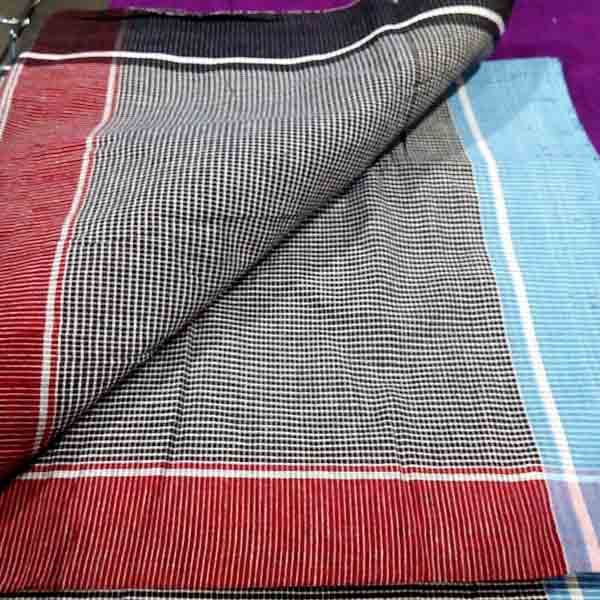
Craft and textiles survive when they are linked to temples, or when they enjoy royal patronage. The legendary Kodalli Karuppur saree which I helped reproduce at Kalakshetra evolved under the patronage of the Maratha ruler Serfoji Raja Bhonsle Chatrapathi II in the 18th century woven exclusively for the Thanjavur royalty up to the 19th century. The Karuppur fabric was used for religious rituals and worn only by nobility. The sarees were produced in the village of Kodalli Karuppur near Kumbakonam in Thanjavur district by 400–500 families who migrated from Saurashtra to various weaving centres in the South.
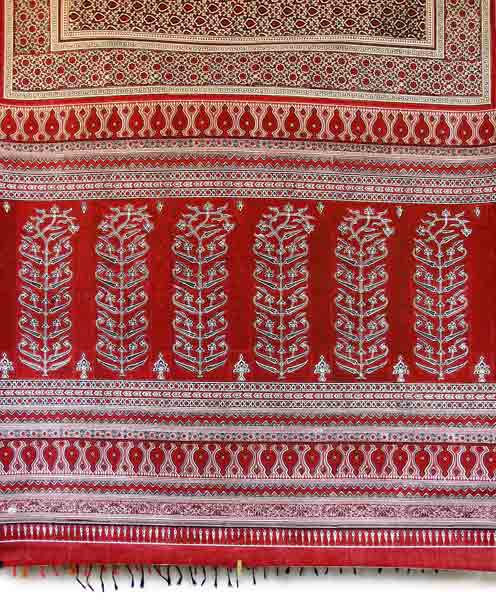
The Kodalli Karuppur saree is a joint effort by the weaver, printer and the painter, and involves multiple skills. When we reproduced the Karuppur saree at the Craft Education and Research Centre of the Kalakshetra Foundation in Chennai, I hoped that one prototype would lead to many more Karuppur sarees to be made as close as possible to the original. This didn’t happen, though we have standing orders for at least four sarees even if the price could be over a lakh each. I am looking for corporate sponsorship which might make this happen!
At the end of the day I wonder, if reviving sarees is enough. It has to be an ongoing process, with the looms humming at least for two years, offering the hope of sustainable livelihood for the poverty-stricken weaver.
Pictures by Sabita Radhakrishna





